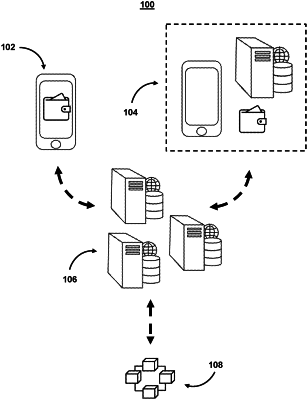| CPC H04L 9/3236 (2013.01) [H04L 9/0825 (2013.01); H04L 9/0894 (2013.01); H04L 9/3247 (2013.01); H04L 9/50 (2022.05); H04L 2209/56 (2013.01)] | 20 Claims |

|
1. A system for using secure, encrypted communications across distributed computer networks to efficiently update cryptography-based digital repositories for performing blockchain operations in decentralized applications, the system comprising:
a first cryptography-based, storage application, wherein the first cryptography-based, storage application corresponds to a first private key, and wherein the first private key is stored on a user device;
a second cryptography-based, storage application, wherein the second cryptography-based, storage application corresponds to a first partial private key and a second partial private key, wherein the first partial private key is stored on a remote device network, and wherein the second partial private key is stored on the user device;
a blockchain node, wherein the blockchain node verifies batches of blockchain operations, and wherein each batch of the batches comprises a plurality of blockchain operations involving the first cryptography-based, storage application and the second cryptography-based, storage application; and
one or more processors and non-transitory media storing instructions that, when executed by the one or more processors, cause the one or more processors to:
receive a first request to query a first subset of blockchain operations of a plurality of blockchain operations verified by the blockchain node;
in response to the first request, generate, for each of the first subset of blockchain operations, a respective call operation for querying the blockchain node;
determine, for each of the first subset of blockchain operations, a respective network-imposed processing load for the respective call operation, wherein the respective network-imposed processing load for each of the first subset of blockchain operations corresponds to a respective computational effort required to execute the respective call operation;
generate an aggregate call operation, wherein the aggregate call operation causes execution of the respective call operation for each of the first subset of blockchain operations;
determine an aggregate network-imposed processing load for the aggregate call operation, wherein the aggregate network-imposed processing load corresponds to an aggregation of the respective network-imposed processing load for each of the first subset of blockchain operations;
determine whether the aggregate network-imposed processing load is available; and
in response to determining that the aggregate network-imposed processing load is available, execute the aggregate call operation.
|